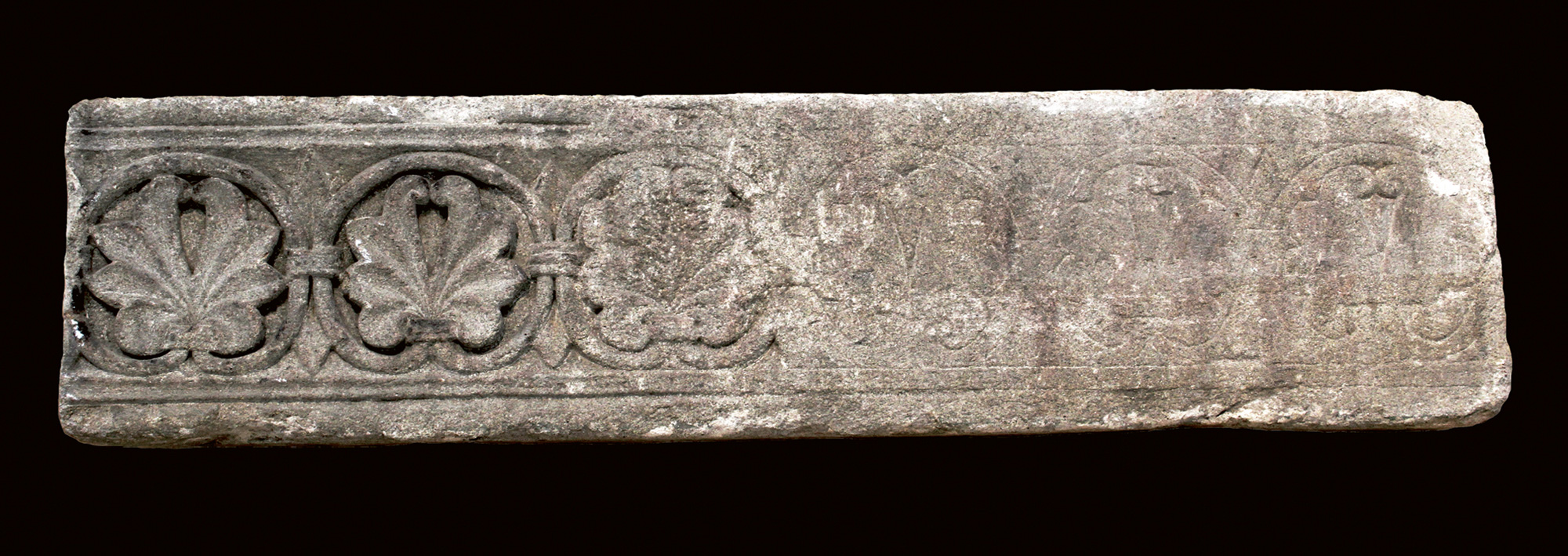Style-Eating Granite
Mineral entropy
Alexander Nagel

One day around the year 1200, a carver in the busy workshop of the Cathedral of Santiago de Compostela halted work halfway through carving a frieze. The granite on the right side is still intact but for some shallow incisions, guidelines that would have been chipped away if the carver had followed their invitation to excavate the motif three more times. But he didn’t. Why? Around 1200, the cathedral, flush with money, was undergoing major additions and renovations under the direction of the famed Maestro Mateo. It is not hard to imagine that at the hectic site plans were subject to sudden change. One can almost hear the tink-tink-tink of the chisel come to an abrupt stop at the moment the foreman said, “We’re not going to have a lintel there anymore—stop carving.” Or: “We’re going to make the lintels bigger. Don’t ask me why. Just stop.” Or maybe: “Roundels are supposed to be round, not wobbly like pretzels! Just drop your tools. You’re fired.”
The greater mystery is why the half-finished block was kept at all. For eight hundred years it has remained on the cathedral site, even though it was never used in any construction and is hardly a distinguished piece of work. Now it is on display in the Cathedral Museum as a prize exhibit of Romanesque carving technique—a thoughtful gift from the past to art-history-loving moderns. Thoughtful, because past generations needed to have preserved it despite its uselessness for building purposes—they must have found other reasons to want to keep it. Perhaps initially someone thought it could be put to use at some point, somehow. But before too long, other reasons had to be found to justify the trouble of preserving it. Perhaps it became valuable as a relic of the famous master’s shop. Three centuries later, this piece would have stood as a reminder of a technique belonging to a time before paper was predominant, a time when any preliminary drawing would have been done directly on the block, followed by shallow incised lines that guided the work of carving.
The main reason it was preserved from then until now is that it became, fairly early on, an object of quiet, lasting fascination. It failed to fulfill its role in the construction project and decorative program, but it found another function, offering a visual statement of a more philosophical sort. Freed from function, the unfinished block became a demonstration of the artistic process itself, a subject with resonant implications. The block could then be read as follows: Here is a diagram of how a plan becomes reality. Or: Here is how it looks when reality falls short of a plan. Or: Here is a mute stone turning into significant form. Or rather: This shows you that those forms are there in the block, just waiting to be released. Or perhaps: A design was imposed on the stone but it didn’t take, because it was inappropriate to this stone.